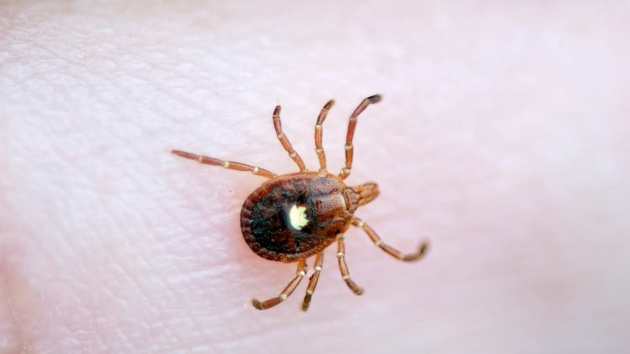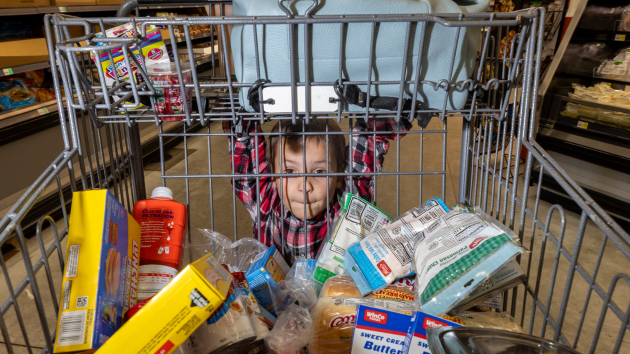1 in 6 toddlers have not completed childhood vaccine series, study finds
Written by ABC Audio ALL RIGHTS RESERVED on July 26, 2023

(NEW YORK) — Several routine childhood vaccines require multiple doses to be effective, but a new study finds children are not receiving all of them.
The study, published in the journal Pediatrics Wednesday, found one in six toddlers between ages 19 months and 35 months started the vaccine series but didn’t complete it, leaving them vulnerable to serious diseases.
Researchers from several institutions, including the University of Montana, the University of Colorado, Kaiser Permanente Colorado and the Yale School of Public Health, looked at data from the 2019 National Immunization Survey for more than 16,000 children.
They looked at vaccine series’ that protects children from 11 different diseases including diphtheria, tetanus, acellular pertussis, pneumococcal infections, Haemophilus influenzae type B, hepatitis B, polio, measles, mumps, rubella and varicella.
The study found that only 72.9% of toddlers completed the combined 7-vaccine series and 17.2% — equivalent to one in every six toddlers — initiated, but did not complete, the one or multiple multidose vaccine series.
What’s more, approximately 1.1% of children were completely unvaccinated and 9.9% had not initiated one or more of the seven vaccinations.
“I think the study highlighted a trend that we had been seeing in pediatrics prior to the pandemic,” Dr. Nathaniel Beers, executive vice president of community and population health at Children’s National Hospital in Washington, D.C., who was not involved in the study, told ABC News.
“I think certainly during the pandemic, we’ve seen actually worsening of this trend and have been doing a lot of work in the last year in particular to across the field of pediatrics to ensure that we were addressing the worsening vaccination rates beyond the those that were highlighted in the study that was published,” he added.
Ninety-three percent of kindergarten-age children had received the recommended vaccines, according to a recent report from the Centers for Disease Control and Prevention conducted during the 2021–22 school year.
This is lower than both the 94% coverage reported during the 2020–21 school year, and the 95% coverage reported during the 2019–20 school year, prior to the pandemic.
Researchers identified factors for why some children started, but did not complete, the vaccine series including families moving across state lines, number of children in household and lack of health insurance.
“Certainly, maintaining and sharing adequately of medical records creates barriers to ensuring adequate care,” when people move across state lines, Beers said.
He continued, “We know people have been more transient for work or other reasons, and that certainly creates gaps in care for kids, particularly young kids who have frequent immunization needs in the first three years of life.”
Beers said another contributing factor is vaccine hesitancy, which is defined as delaying or refusing vaccination despite their widespread availability.
In 2019, the World Health Organization called vaccine hesitancy one of the top 10 threats to public health because it “threatens to reverse progress made in tackling vaccine-preventable diseases.”
We’ve seen vaccine hesitancy play a role in measles outbreaks in the U.S. including a recent outbreak in Columbus, Ohio, where 85 children were infected.
“There’s two components that are why we encourage people to get vaccinated,” Beers said. “So, it’s preventing the disease in yourself, but also preventing the spread of disease in the community.”
This helps create herd immunity, in which enough people have been vaccinated or are immune to disease, which then becomes unable to spread.
To help increase rates, the team re-highlighted some methods including more widespread adoption of systems that remind parents their child is due for or is late receiving their next vaccine dose, expanding vaccines to more places outside of a primary care setting, as well as speaking to hesitant parents.
“We certainly [need to] continue to work on vaccine education, making sure that we are providing that for patients and families,” Beers said. “Even for those families who have previously rejected the opportunity to get vaccines, making sure that we continue to offer them the opportunity to start those, and to continue that dialogue, because people do change their minds and continue to get good high-quality information is an important piece of helping people make a decision to move forward with vaccinations.”
Copyright © 2023, ABC Audio. All rights reserved.

 KVSP
KVSP 




